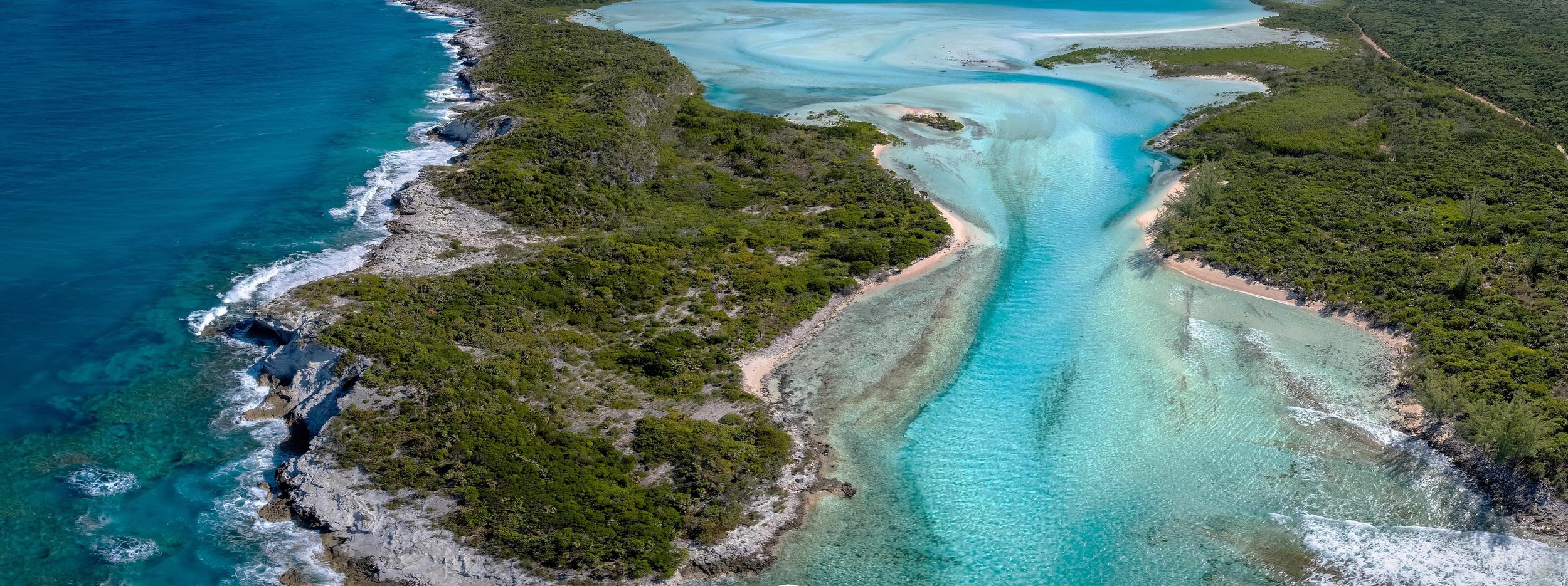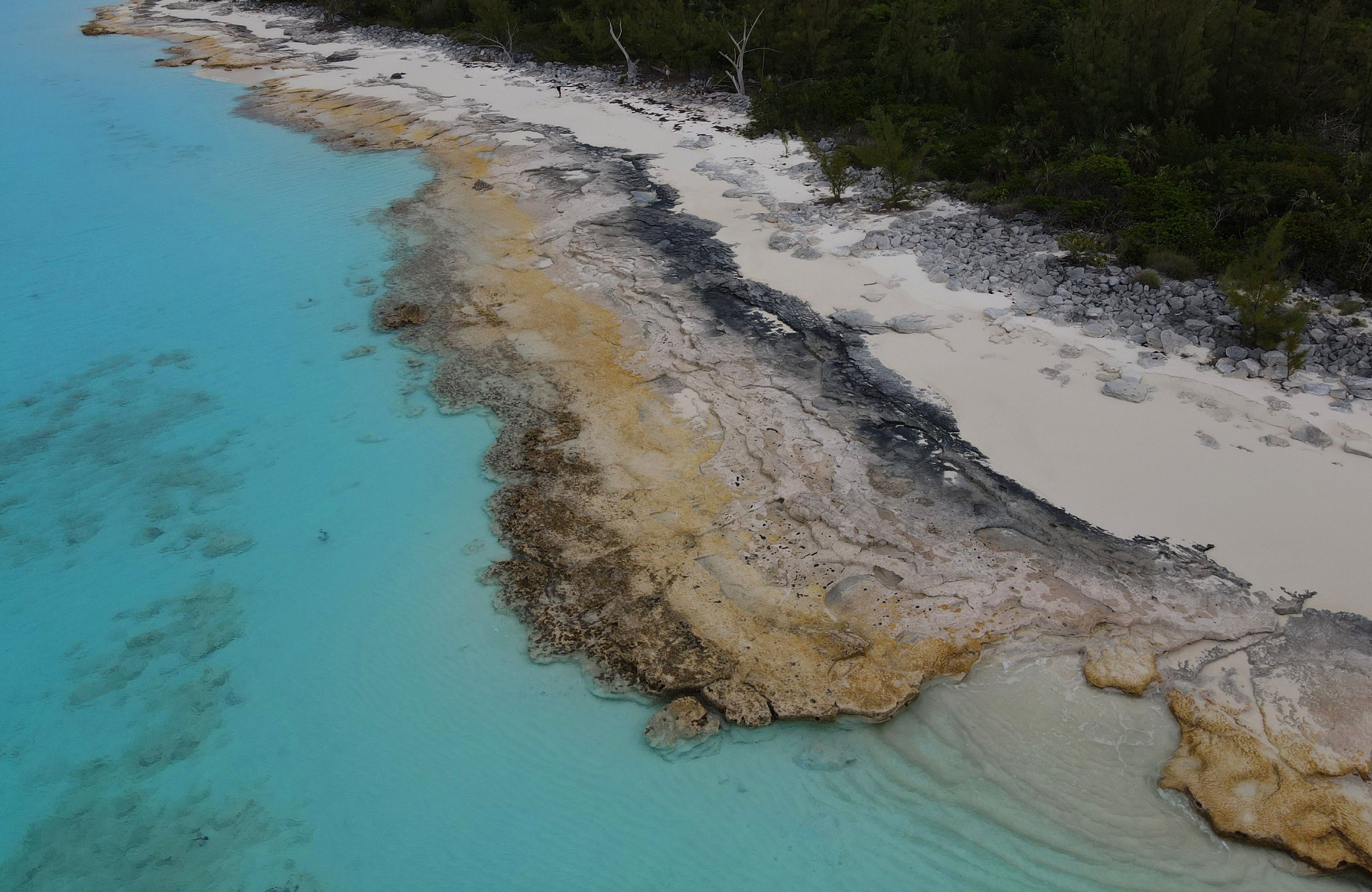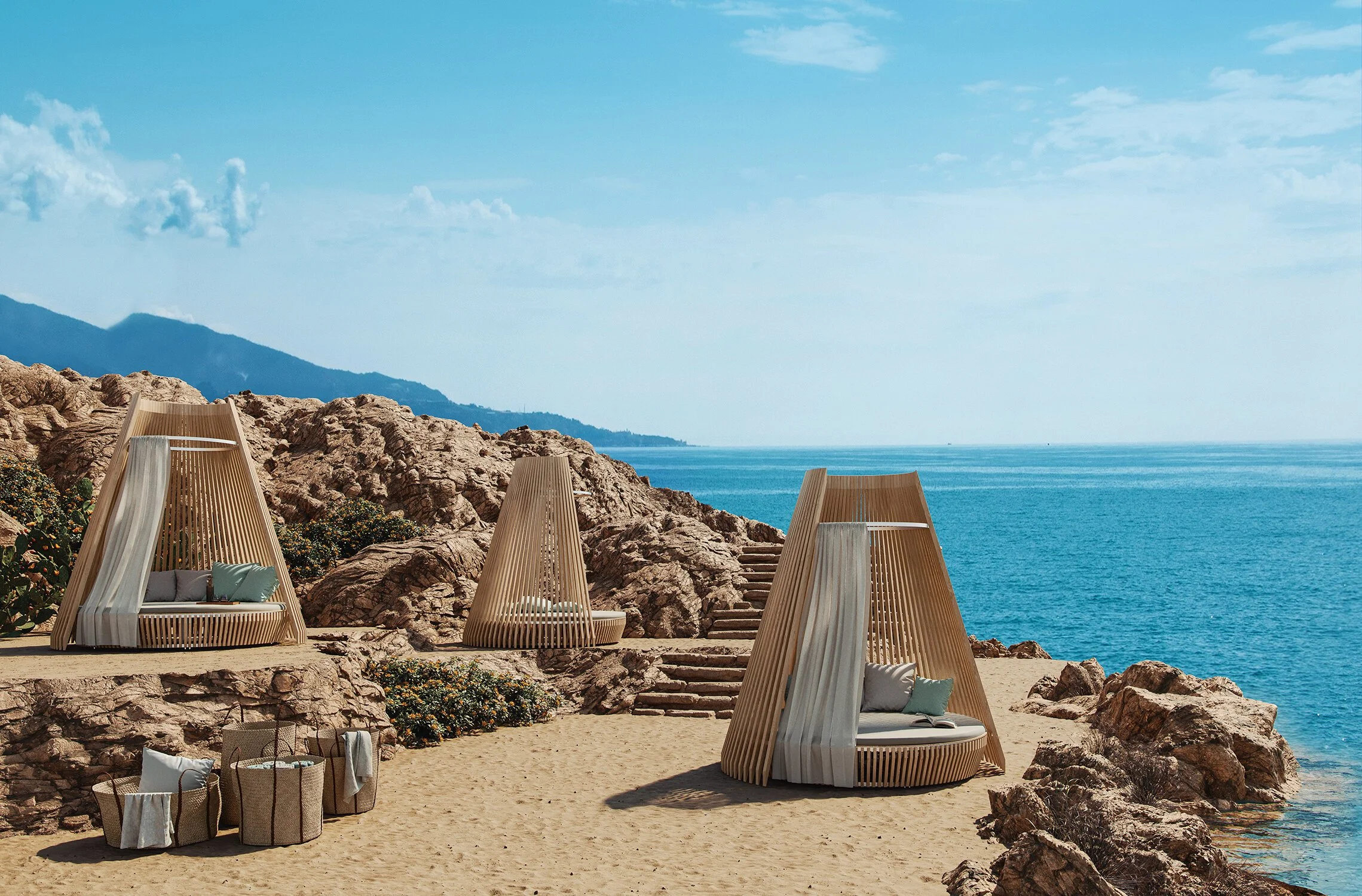ROOM + WILD NATURALS: The Michael Young Foundation
Discover The Salinas Nature Reserve, Long Island Bahamas With Nina Pesavento And The Michael Young Foundation.
In R+W Naturals, we connect with like-minded visionaries who set the bar in sustainable travel initiatives, embodying the Room + Wild mantra of ‘landscape enhanced structures’, ‘traveling with purpose,’ and achieving the successful architectural, ecological and cultural integration of their most wild surroundings.
Each segment continues to see commonalities of unwavering devotion, passion and self-discipline from our varying subjects. Often, it is these attributes that enable these pioneers in their respective fields to be at the top of their game; each with a story equally as unique as the people and places they speak to.
As we highlight the personalities that carry the torch in ecotourism and sustainable living, we too become inspired by the organizations that collectively forge the path and make a real difference in our planet's future. We often look at ways in which our community and the travel industry aim to maintain our environment. More specifically, the wild places that have often been abused through humankind’s industrial practices, being left in desolate, weakened conditions for their native species and ecosystems.
“Sustainability is simply not enough, nor is it an acceptable one-stop solution. Regenerative development, however, aims to not only act and implement sustainable choices and mandates, but to build off of our not-so-good past decisions.”
Sustainability is simply not enough, nor is it an acceptable one-stop solution. Regenerative development, however, aims to not only act and implement sustainable choices and mandates, but to build off of our not-so-good past decisions. When the status quo includes hundreds of millions of acres of degraded to destroyed farmland, leveled rainforest, exhausted fisheries and aquifers, toxic-choked wetlands, infertile coastline, decreasing biodiversity, and a changing climate, we cannot accept the present as the best we can do. Zero emissions places us in the lane of not only revitalizing our footprint but also carrying less waste/byproducts and increasing the capacity of our land use. Regenerative development takes it one step further with the use of resources to improve the wellbeing of our society as a whole. The current state of our planet’s remaining wild places needs to be viewed in the context of a new problem-solving and development framework. This ultimately builds sustainability and capacity, and, most importantly, maintains it.
“The current state of our planet’s remaining wild places needs to be viewed in the context of a new problem-solving and development framework. ”
The Salinas Nature Reserve
The Salinas Nature Reserve represents a new era for The Michael Young Family Foundation, a Toronto-based charitable organization with deep roots in environmentally-focused community initiatives. Since its inception, The Michael Young Family Foundation has been dedicated to improving overlooked landscapes in urban and rural environments in ways that directly benefit the people who call them home.
The Salinas is a shining example of how this ethos and process works, as well as the dedication and resources needed to make an idea a reality. On the southern coast of Long Island, Bahamas, 10,000 acres of white sand coastline and wetlands have sat abandoned for nearly 20 years after serving as a Diamond Crystal Salt complex. While nature has reclaimed much of the site from its industrial past, significant interventions are required to fully revitalize the area’s ecology. The Salinas is a destination created to improve its natural surroundings, with regenerative landscape design at the heart of the vision. More than 80% of the property serves as a nature reserve, with the remaining land dedicated to low-impact sustainable development, such as what you might find in the ROOM and WILD collective.
“The Salinas is a destination created to improve its natural surroundings, with regenerative landscape design at the heart of the vision. More than 80% of the property serves as a nature reserve, with the remaining land dedicated to low-impact sustainable development”
The Salinas Development proposed community rendering
We sat down with the core members of The Salinas’ leadership team and learned some very important and equally inspiring facts about their mission in Long Island, Bahamas along with their plans to breathe new life into a forgotten Caribbean paradise.
David Young, Founder and Chairman of The Michael Young Family Foundation; Chairman of The Hamilton Group Inc., which owns The Salinas property
Nina Pesavento, President of Diamond Crystal Properties Limited, the company that is developing The Salinas property
John Lounds, former CEO of the Nature Conservancy of Canada; President of Long Island Conservancy, a non-profit organization that oversees The Salinas Nature Reserve
Keith Bishop, President and Founder of Islands by Design, the preeminent environmental engineering firm in The Bahamas; Vice President of Long Island Conservancy
R+W: For such large accomplishments, in places like Toronto the story of the foundation behind The Salinas is relatively unknown. We often find that most of our subjects attach themselves to a personal or passionate cause that drives them to such achievements. Can you tell us more about the mission and purpose of MYFF and how it originated?
DY: Our foundation is named after Michael Young, my brother. He was born with challenges. He did not finish school. He did not have a big career, never married or bought a house. He died after an epic battle with cancer at the age of 52. Yet, if the best way to measure achievement is the distance traveled, not the end point, Mike was a massive overachiever. The aim of our foundation is, simply, to follow in Mike’s footsteps. It was formed in 2001, initially to fund cancer research, then expanded into the arts and the environment in 2003. Since its inception, the foundation has concentrated on only a few projects at a time, preferring to invest in depth. Notable partnerships to date have included The Nature Conservancy of Canada, Kawartha Land Trust, Evergreen Brick Works, Artscape Youngplace, the Young Centre for the Performing Arts, and an ongoing relationship with the Art Gallery of Ontario. Our principal focus since 2018 has been a program with The Nature Conservancy of Canada to help develop Land Trusts and regenerative farming. This environmentally-driven work has since broadened to become ‘Our Anthropocene Project,’ with our latest focus being The Salinas Nature Reserve.
Michael Young, David's brother, with his nephew and namesake, Michael Young
Kawartha Land Trust. Integrated Land Project Map
R+W: What has been the largest milestone achieved so far? How has your team evolved and been solution oriented in such a massive undertaking in the remote area of Long Island, Bahamas?
NP: Mobilizing a world-class team of ecologists, planners, and hydrologists to crystalize the vision and design of The Salinas Nature Reserve has been essential to advancing the project since day one, and I’m happy to say that we’re officially well on our way. In a remote area such as Long Island, the typical commercial, large-scale beach resort model would never work for several reasons: the lack of surrounding development, access from a logistics and transportation point of view, and, more importantly, alignment with the surrounding community’s values. Growing up on Long Island is like getting a crash course in Bahamian ecology. Long Islanders have a deep knowledge about the plants, animals, and ecosystems that surround them because they form the bedrock of recreation and everyday life on the island. Bringing that deep connection to the natural landscape to the center of our project was an obvious decision. It’s what makes Long Island such a special place for the people who live here and everyone who visits. The fact that we have such a massive amount of wetland and coastland to design this destination presents a momentous opportunity to showcase the majesty of Bahamian wilderness on an international scale.
“Bringing that deep connection to the natural landscape to the center of our project was an obvious decision. The fact that we have such a massive amount of wetland and coastland to design this destination presents a momentous opportunity to showcase the majesty of Bahamian wilderness on an international scale. ”
Long Island, Bahamas
R+W: Looking into the future, can you paint us a picture of the perfect or best possible outcome for how you see this development in five years from now (land use, application, industry, attraction, partnerships)?
NP: In five years, we hope for The Salinas Nature Reserve to be fully operational, along with a high-end hospitality program that thrives in tandem with the reserve. Finding the right operator who is aligned with the concept of nature-based tourism, can deliver luxury guest amenities, and values seclusion as a major selling point for visitors and residents has perhaps been our biggest challenge. Howeverm in the past few years — especially since coming out of the pandemic — we’re increasingly seeing this shift towards travelers looking for more authentic, environmentally-focused destinations that are off the beaten path, so we’re confident we’re in a ‘right place, right time’ scenario quite by happenstance. The dream is that there will be a notable buzz about visiting The Salinas in five years’ time.
Long Island Bahamas
“In a remote area such as Long Island, the typical commercial, large-scale beach resort model would never work for several reasons: the lack of surrounding development, access from a logistics and transportation point of view, and, more importantly, alignment with the surrounding community’s values. ”
R+W: What advice and learnings would you give your younger self or team or to another organization/community/developer after working on this initiative thus far?
NP: Number one would be to stay open, and, related to that, to find smart people to work with who know more than you do. It’s easy to go in bullish on a specific concept and get hung up on seeing a single idea come to fruition, but with the long-term time horizons of development projects like ours, recognizing market changes and evolutions in demand is critical to uncovering the best opportunities within the project, even if that means straying from initial plans. I began working on the concept for The Salinas in December of 2020, a few months before the world shut down with the pandemic. And before that, David’s initial concept drawings for plans dated back to 2005. Throughout that time span, the project triumphed through countless hurdles — ownership disputes, a global recession, a complete standstill on all travel — and nearly died several times over. But continuing to see the property within the context of new global trends, traveler interests, and, quite frankly, our own values kept it afloat and allowed us to get to the point where we are today.
The Salinas Development proposed community rendering
R+W: Room + Wild is all about integrating landscape into architecture. How do you plan on telling the story of the community/ecology and building that into your business and planning?
NP: The Salinas project is unique in that regenerating the environment is inherent to our business plan and site planning. Our site’s history as an industrial salt operation commands remediation efforts in order to help the wildlife to continue to flourish. From a site planning point of view, earthwork really serves two purposes: enhancing existing habitats for critical species, and simultaneously facilitating the visitor experience. As our environmental advisors have noted, we have a massive opportunity to see almost all of our interventions positively impact the site conditions and ecology. Regenerating the environment and protecting wildlife in perpetuity is inherent to our visitor programming experience and long-term success as a brand. It’s in everyone’s best interest to design a development that has a net-positive impact on the environment.
“Our site’s history as an industrial salt operation commands remediation efforts to help the wildlife that has slowly reclaimed the area continue to flourish. ”
The Salinas Nature Reserve
R+W: Why is The Salinas Nature Reserve of particular ecological importance, both to The Bahamas as well as the broader region?
JL: As a result of many years as a saltworks, the site supports much less biodiversity than the original lagoon would have. Remediating the hydrology and restoring the lagoon will bring back a critical nursery for bonefish and an important migratory and wintering site for birds such as the endangered Kirtland’s warbler, as well as make a significant contribution to the overall marine protected areas in The Bahamas. The planting of mangroves will accelerate this restoration, as well as improve the sequestration of carbon on this site.
R+W: Can you give us examples of the wildlife in the area that has been most affected by past industry and lack of protection?
KB: Wildlife in The Bahamas is primarily avifauna. Our bird population numbers consist of approximately 385 species. Of these species, seven of them are endemic, 21 were introduced by humans, and approximately 212 are rare or accidental. All birds are protected in The Bahamas by the Wild Birds Protection Act. The act does allow for limited seasonal hunting of a few species, but this is closely monitored and does not include the affected populations. The biggest threat to these species is loss of habitat and foraging areas, which is why The Salinas Nature Reserve is so critical to protecting wildlife habitats and allowing these species to thrive.
R+W: Are there any outside charitable organizations that The Salinas team has partnered with so far? And are there any others you aspire to bring into the project in the future?
JL: The Bahamas National Trust and the International Conservation Fund of Canada have helped to get the project off the ground. As the project matures, partners that will be asked to participate include the American Bird Conservancy and the Bonefish and Tarpon Trust, among many others.
R+W: How does The Salinas project fit within the broader ethos behind MYFF and Our Anthropocene Project?
DY: The Foundation, as a small all-voluntary, almost no cost operation, decided early on to concentrate on a few projects and go deep. Secondly, as a family-built foundation, we decided to concentrate on place and community. From there it seemed obvious to concentrate on places and communities we knew best. Hence, at the beginning, we were solely focused on Toronto. Subsequently, I inherited a large conservation property near Lindsay, Ontario, began talking to local conservation groups, and from there came the seeds of the ‘Integrated Land Project,’ which marries regenerative agriculture practices with conservation initiatives and has grown with an ambition to go national with the Nature Conservancy of Canada. Similar to The Salinas, The Integrated Land Project sits within Our Anthropocene Project and recognizes our potential to have a net-positive impact on the environment using the knowledge and tools we have access to today. The Salinas is a long and shaggy dog story that begins in 2004 with a trip to a slice of paradise, which ultimately led to purchasing the property—then broken promises, dogged determination, and a gradual understanding of the importance and opportunity of what we could potentially do. We are still learning, but The Salinas fits within a broader 210,000 acres of marine managed area that needs leadership and is a natural expansion to our nature reserve project. We like thinking big!
“The Salinas is a long and shaggy dog story that begins in 2004 with a trip to a slice of paradise, which ultimately led to purchasing the property—then broken promises, dogged determination, and a gradual understanding of the importance and opportunity of what we could potentially do. We are still learning, but The Salinas fits within a broader 210,000 acres of marine managed area that needs leadership and is a natural expansion to our nature reserve project. We like thinking big!”
At present, a world-class team of hydrologists, ecologists, and planners are working together to restore habitats throughout the site and establish a low-impact visitor experience that enables responsible exploration of this natural marvel. The official opening of The Salinas Nature Reserve will mark a monumental moment for Long Island and The Bahamas at large.



















